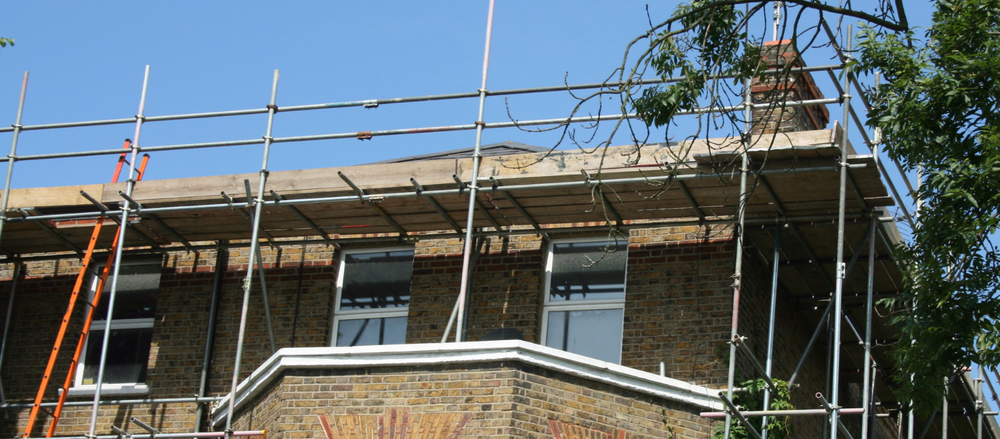BRRRR: a buy-to-let guide
BRRRR is an increasingly popular property investment strategy with buy-to-let landlords, but what exactly is it? We promise it has nothing to do with buying bricks and mortar in cold weather conditions and everything to do with buying, refurbishing, renting, refinancing and repeating the trends. But is it right for you, or should you stick with your traditional buy-to-let investing methods, such as finding somewhere that doesn’t require much time or effort to get on the rental market? We’ve got the answers with this guide to BRRRR and everything you need to know.
What is BRRRR?
BRRRR is an acronym for a property investment method that stands for 'buy, refurbish, rent, refinance and repeat.' Following this method, investors target distressed properties – those in need of a significant amount of work – and off-market homes like abandoned buildings, with the plan to do them up to a high standard and rent them via the lettings market.
Once completed, the goal is to refinance the property and repeat the process with another investment, building a substantial buy-to-let portfolio in the process. Generally speaking, the aim is to get properties at a low price and flip them into rental homes, making money as you go along.
In order for the process to be a success, investors need to repeat the steps in order. Skipping one will likely lead to issues during the process or, worse yet, a breakdown of the method and a failed investment.
How is it different from a conventional buy-to-let strategy?
A traditional approach to creating value with buy-to-let investment sees the landlord purchase a property and put it on the rental market as soon as possible to earn passive income and/or build equity. Some properties may need a few touch-ups, such as a lick of paint on the walls or appliances updating, but for the most part they're bought ready to go.
More work is required with a BRRRR investment. Buyers need to find a fixer-upper property and then put in the effort to bring it up to scratch. This could take months or years, and will definitely require considerable labour and expertise from the relevant professionals. Landlords also need to ensure they have a reliable cash flow to ensure that works can proceed smoothly throughout the process of renovating the property.
It therefore requires more patience as an investment strategy than purchasing a conventional buy-to-let property. There are also more things to consider, such as overseeing a refurbishment of the home and, in some scenarios, ensuring suitable finances are in place.
How does it work?
There are several individual steps to conquer with BRRRR, each of them generally more complex than purchasing a rental property that is ready to go.
Buy
The first step involves identifying a property with potential in need of fixing up. These homes tend to be unmortgageable, so you might need a renovation mortgage or bridging loan. The primary aim here is to buy an inexpensive property with plenty of potential for capital appreciation. Therefore, you need to look at all the variables and do the maths as best as possible to see if it's a worthy investment.
Refurbish
The property will need a considerable amount of work, which could involve anything from major redecoration to substantial structural refurbishments. It's important to factor in the renovation costs before buying the property. It will be hard to get a definitive total cost, it's worth getting estimates from several traders and then budgeting for a higher amount as refurbishment usually throws up a surprise or two (more on that shortly).
Rent
Now that the property is modernised (and fit for human habitation) it's time to put it on the rental market. This is when you need to treat it like a conventional buy-to-let investment, factoring in everything from tenant find to property management and the type of rental agreement. Once you rent out the property, you can start receiving passive income in the form of your rental payments.
Refinance
Your BRRRR property's value should increase if it was successful, as you've fixed it up and turned it into quality housing. At this point, you can refinance the property by remortgaging it to borrow more money. Those extra funds can then be used to purchase another fixer-upper, which leads us to…
Repeat
It's time to repeat the process all over again and build your portfolio.
What are the risks and rewards?
BRRRR is certainly not an investment strategy to be undertaken lightly. As with all investment, the theoretical rewards are higher than more conventional alternatives because you assume greater financial risk during the process.
Risks
- Initial financing – If you don't have the funds required for a cash-only purchase, financing a fixer-upper can be more costly than properties requiring a traditional mortgage.
- Staying on budget – Even with very thorough research, it can be hard to budget for a renovation project. Properties that need gutting out often rack up extra costs as new problems emerge during works. For that reason, you should always try and budget a little higher than initial estimations, just in case there are issues with piping, gas supply, etc. You need to ensure that you have enough funds to fix up the property and keep everything ticking over while you get it ready to rent.
- Market conditions – It's hard to predict market conditions over a six-month plus period, and this is usually the amount of time it takes to get a fixer-upper ready for rental. Tenant demand and supply of stock in the sales and lettings market could increase or decrease during that time, and local market conditions will impact the realistic returns you can achieve with your property.
As with all property investment, there's an element of risk involved as any speculative calculations determining future value will depend on a lot of contingencies and market conditions that cannot be forecast with absolute certainty. Given the amount of time, effort, and labour involved in fixer-upper home, the stakes are higher should you fail to secure adequate returns on your investment.
Rewards
- High return on investment – If all goes to plan, buying a fixer-upper for a low price could see you reap the rewards from substantial capital appreciation. Plus, you can convert the property into an attractive rental home that commands high asking rents, allowing you to benefit from higher yields in addition to a strong resale value (which is good for refinancing).
- Passive source of income – Once you start receiving rent, the property will provide you with an extra income stream.
- Lower maintenance – Recently refurbished properties should cost landlords less in terms of maintenance and repairs compared to older homes.
- Building a portfolio and creating compounding value – Successful investment in BRRRR could see you build a property portfolio using fairly modest set up funds, increasing your monthly income and net wealth substantially in the process. It could also become your primary means of income, with property development becoming a full-time job.
How do the potential returns compare with a convention buy-to-let investment?
It all comes down to how much you put into the property. The aim of buy-to-let investment is to build value through capital appreciation on an asset while earning a monthly income. The average home in the UK costs £251,000, with London prices much higher at £650,000. By comparison, a development property could cost significantly less even with renovations factored in, and its sale value could increase very quickly.
Returns can potentially be higher and the cost of acquiring the property is often lower, but it can be more difficult to finance the purchase of an unmortgageable property if you do not have capital available upfront. A development property also requires more effort and patience. You should expect it to take at least six months from initial purchase before the property is ready to let.
Ultimately, it comes down to your personal finances, the time you have available to oversee the renovations, and your appetite for challenging project. A conventional investment property will usually yield returns more quickly and there's less risk in buying a turnkey unit. A BRRRR project is riskier, but the potential returns are a lot higher. Additionally, there is a lot of personal gratification to be had from successfully redeveloping a derelict property into a great home, and seeing your hard labour rewarded with significant profits.
Is it worth it?
BRRRR can be a savvy way to invest money and build a mini property empire. When done right, homes in poor condition can be bought relatively cheaply and see their value increase much faster than a conventional rental property.
We've all seen Homes Under The Hammer and similar TV shows, which follow enthusiastic (and often naive) property developers as they attempt what is essentially the BRRRR method. The potential for long-term value creation is there, but don't underestimate the work and costs required to make BRRRR a successful venture - it is not for the faint-hearted.
Top tips for anyone considering BRRRR
- Ensure you have financing in place beforehand.
- Look for a bargain at property auctions and by searching the market across the UK.
- Buy somewhere below market value.
- Don’t refurb on the cheap as this is almost always a false economy. It almost always leads to problems later down the line.
- Stick to budget and timeframe as much as possible.
- Put more emphasis on finding good-quality tenants instead of letting to the renter with the highest offer.
Summary: Is BRRRR right for you?
A BRRRR investment strategy can enable you to create wealth by building a buy-to-let portfolio with a modest upfront investment, while also generating high returns on assets whose value you have increased significantly through redevelopment. Once successfully renovated, a previously derelict property will generally increase in value significantly over a shorter period of time than it would take for a turnkey property to appreciate on the sales market. This will allow you to refinance the property to free up the funds for your next venture.
However, it's a difficult, time-consuming process that requires plenty of patience and hands-on project management. If it's your first time, consider going in with a partner or, at the very least, getting plenty of advice from professionals who have done it before. With the right mindset, BRRR has the potential to be an excellent investment strategy that sees you build your passive income while accruing wealth in assets.
At Home Made, we offer a hybrid lettings solution that adds value at every stage of the rental process. With our game-changing new landlord platform, The Property Wallet, we offer London landlords exceptional tenant-find and property management services for a low monthly fee.
- Avoid expensive upfront fees and spread the cost of marketing your property with the option to pay monthly.
- Free rent collection and arrears chasing.
- Sign off and see all charges and payments in your dashboard.
- Real-time updates on marketing, viewings, and offers.
Prices start from just £50+VAT/mo for tenant-find and £60+VAT/mo for management. Alternatively, you can pay a one-off upfront fee of £1,200+VAT for our tenant-find service.
If you would like to speak with us about your property needs, contact us via our website to find out how we can help. If you're ready to get started, book your free valuation here.
Book valuationCheck out more of our landlord advice here and follow us on Twitter, Linkedin, and Instagram for regular updates on industry compliance standards, market insights, and Home Made company news.




